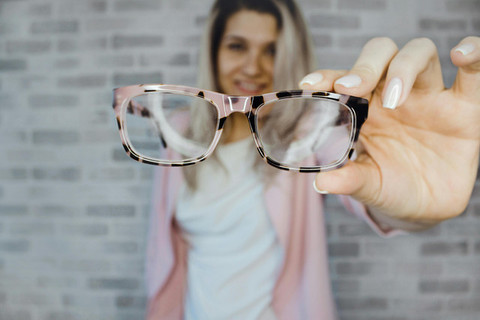Plastic Vs. Polycarbonate Lenses: Which Is Right For You?
Selecting the right lenses for your glasses involves considering various factors, including your lifestyle, prescription strength, and visual comfort. Two of the most popular lens materials today are plastic (CR-39) and polycarbonate. Understanding their differences helps you make an informed choice tailored to your individual needs.
Understanding Plastic Lenses
Plastic lenses, commonly referred to as CR-39 lenses, have been a mainstay in eyewear since their introduction in the 1940s. Known for clarity and affordability, they've remained popular for decades.
Advantages of Plastic Lenses
Plastic lenses offer excellent optical clarity, making them a great choice for prescription glasses. They're typically less expensive than other lens materials and are easy to tint, allowing for various color customizations. According to vision experts, plastic lenses deliver superior visual quality for general everyday use.
Potential Drawbacks of Plastic Lenses
Despite their many advantages, plastic lenses can be thicker and heavier, particularly with strong prescriptions. They're also more prone to scratches unless properly coated, making them less ideal for highly active individuals.
Exploring Polycarbonate Lenses
Initially developed for aerospace applications, polycarbonate lenses have become increasingly popular due to their unique combination of durability, safety, and lightweight comfort.
Advantages of Polycarbonate Lenses
Polycarbonate lenses are incredibly impact-resistant, making them an excellent choice for safety glasses, children's eyewear, and sports goggles. They naturally block UV rays without additional coating, enhancing eye protection.
Potential Drawbacks of Polycarbonate Lenses
Although polycarbonate lenses offer exceptional durability, they may not deliver the same level of optical clarity as plastic lenses. Some wearers notice slight visual distortions, particularly around the lens edges, and they typically cost more than plastic lenses.
Who Benefits Most From Each Lens Type?
Choosing between plastic and polycarbonate lenses depends largely on your lifestyle, visual needs, and personal preferences.
Ideal Candidates for Plastic Lenses
Plastic lenses work best for individuals who prioritize visual clarity and have moderate prescriptions. They're suitable for general daily wear, especially for adults who do not frequently engage in high-impact activities. Budget-conscious consumers also appreciate the affordability of plastic lenses.
Ideal Candidates for Polycarbonate Lenses
Polycarbonate lenses are ideal for active adults, athletes, children, or anyone requiring extra protection from potential impacts. They're also perfect for those with higher prescriptions needing thinner, lighter lenses.
Factors to Consider When Making Your Decision
When deciding between plastic and polycarbonate lenses, consider your daily activities, prescription strength, budget, and safety requirements. Reflect on whether you prioritize clarity and budget (plastic lenses) or durability and safety (polycarbonate lenses). Taking these factors into account ensures you select lenses tailored precisely to your lifestyle and visual needs.
Choose the Lens That's Right For You
Understanding the differences between plastic and polycarbonate lenses empowers you to make the best choice for your eyewear. Whether you value visual clarity, affordability, durability, or safety, there's a lens material perfectly suited to your needs. Explore your options for eyeglasses and discover lenses that enhance your comfort and vision in daily life.
 Save yourself from getting into rush hours and buy your contacts online.
Save yourself from getting into rush hours and buy your contacts online.







